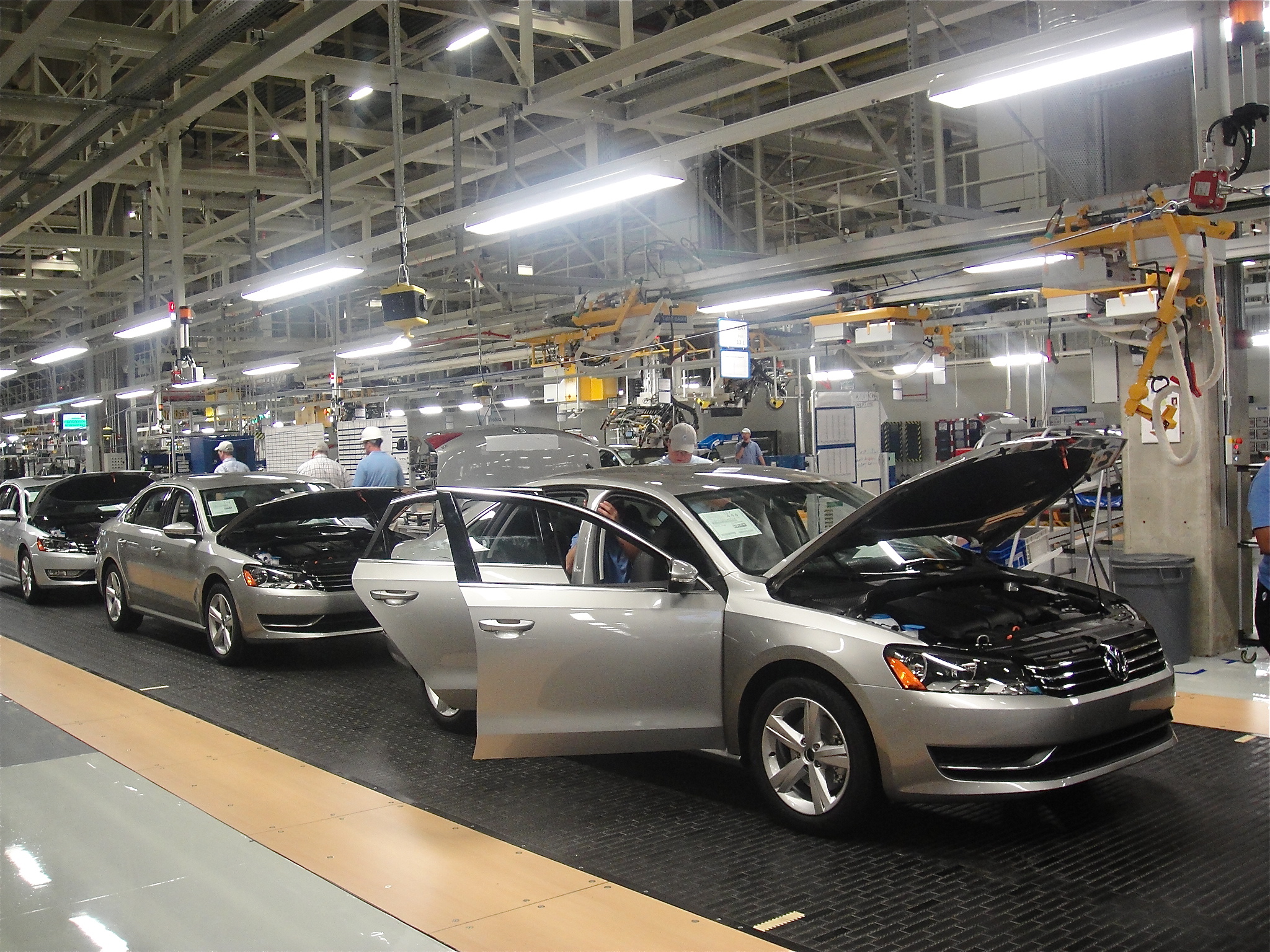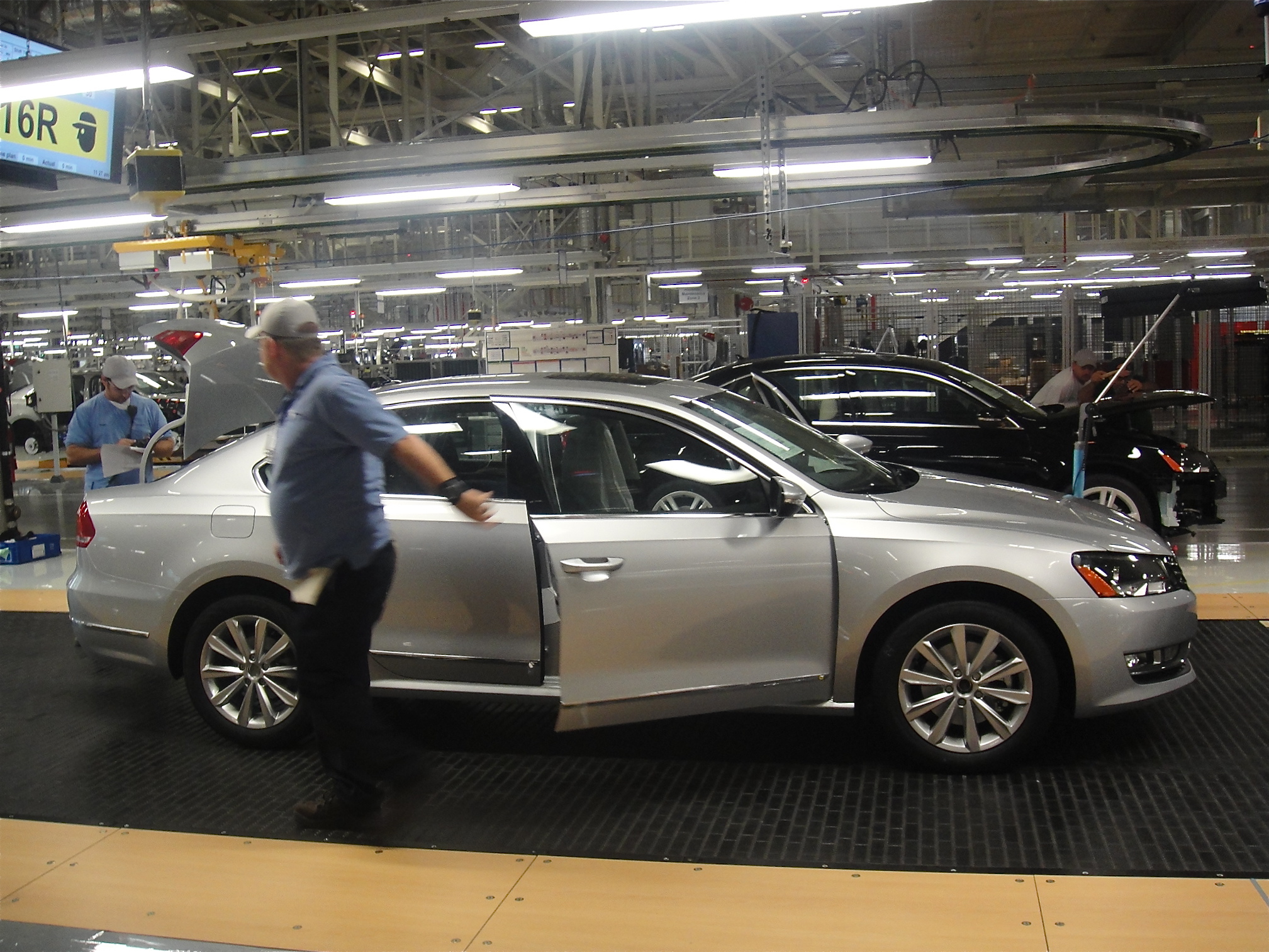 By John LeBlanc
By John LeBlanc
CHATTANOOGA, Tenn. – You have to admire
Volkswagen’s “If at first you don’t succeed, try, try again!” attitude when it comes to building cars South of the Border.

After building U.S. versions of its compact
Golf and
Jetta for a decade in the German automaker’s first U.S. plant—a former
Chrysler factory in Westmoreland, Pennsylvania VW closed after a decade in 1988—the German brand is returning yet again to the Land of the Free with a new facility here in Tennessee (above).
Now while some blame the poor quality of the vehicles that were produced there, VW cites one of the main reasons why Westmoreland failed had to deal with currency fluctuations from European parts suppliers. This time, though, in Chattanooga, VW is sourcing the majority (up to 93 per cent) of the parts for the factory's's first offering,
the new 2012 Passat I recently drove, from suppliers that fall within the North American Free Trade Agreement boundaries, as it has done with its Mexican plant that makes the new Jetta sedan.
As you may already know, the Chattanooga plant is key to VW of USA’s plans to quadruple its current American annual sales to 800,000 by 2018. In its current configuration, Chattanooga can produce 150,000 to 250,000 cars annually. But the site has the acreage to expand. And VW says they can essentially “flip” the current configuration to make up to 500,000 cars per year.
While the 2012 Passat is being counted on to add sales, new VWs like the
2012 Beetle, refreshed
2012 Tiguan, forthcoming subcompact
Polo and an expected midsize crossover based on the new Passat (more than likely built in Chattanooga as well) are also being counted on to meet the ambitious sales targets.
Counter to his American counterparts,
Volkswagen Canada president John White is being more careful when it comes to future sales projections.
“Let’s just say, I haven’t 'socialized' our sales projections as much as my American colleagues have,” said White at the Passat’s media drive here. But that doesn’t mean VW Canada isn’t pulling its weight.
At of the end of last month, VW Canada had sold 21,936 vehicles, up almost 20 per cent from the first five months of 2010. Now if Canada followed the U.S.'s lead, there would be over 170,000 VWs sold annually here by 2018—about what Toyota sold in 2010. But the U.S. arm is also looking at adding more dealers to meet that goal. Whereas White would prefer increase the volume of his existing stores.
“We’re not going to grow the dealer body as much as the U.S.,” said White. Instead, he’s looking to increase sales from last year's over 36,000 vehicles to between 52,000 to 53,000 cars and trucks, closer to what Nissan currnetly sells.
Still, in what is essentially a flat North American new car market, these goals seem ambitious.
Or are they?
Do you believe VW has learned its lessons from the Westmoreland debacle?
Do you think the German automaker can leapfrog over rivals like
Toyota and
Honda, who seem to be on a gradual slide out of favour with new car buyers?
06.23.11 |
2012,
News,
Volkswagen |
Comments Off on The Crank: Can Germany’s VW become an American automaker—again?Comments